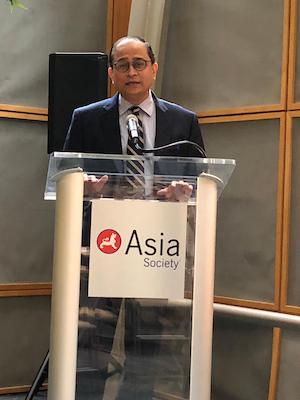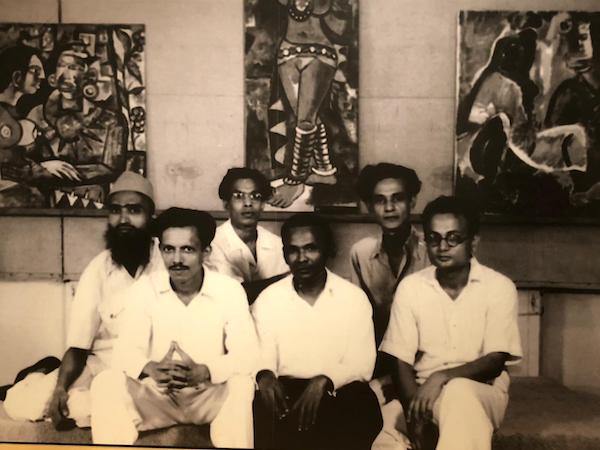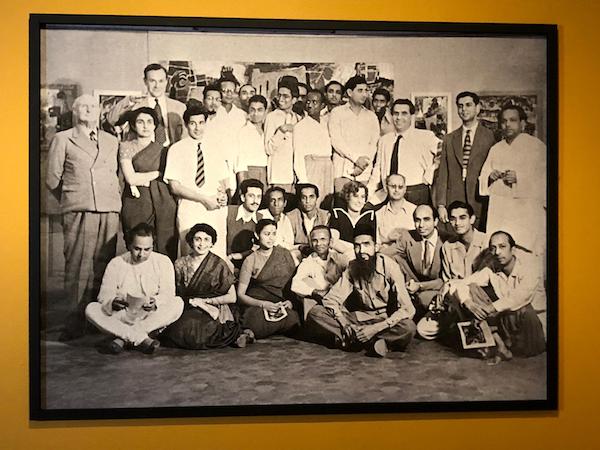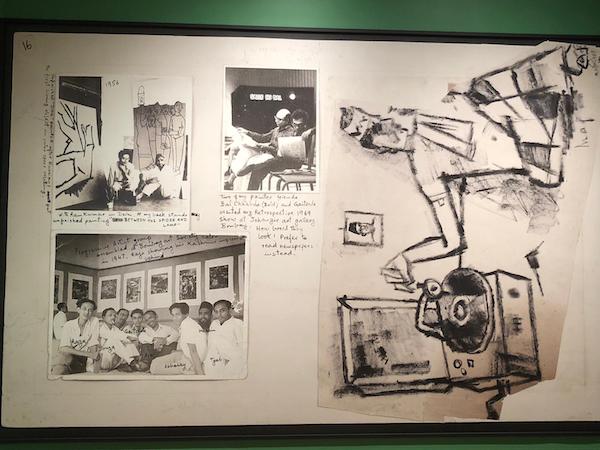
Bidisha Roy
NEW YORK CITY(TIP): The Asia Society of New York hosted a press conference at Asia Society Museum in New York City on September 13 to debut a landmark exhibition of works by members of the Progressive Artists’ Group, which was formed in Bombay, now Mumbai, in the aftermath of independence. India’s Consul General in New York Ambassador Sandeep Chakraborty inaugurated the show.
In his brief speech Ambassador Chakraborty applauded Asia Society for hosting an exhibition of such magnitude. “I am aware of the hard work (of Asia Society) behind the show because it is not easy to convene such an exhibition. This is a rare exhibition because I think this kind of exhibition has not been organized ever before in the United States

Image / Courtesy Raza Foundation Archives. The Raza Foundation, New Delhi
Just after India’s independence, six young firebrands came together in Bombay: K. H. Ara, S. K. Bakre, H. A. Gade, M. F. Husain, F. N. Souza, and S. H. Razaunited to form the Progressive Artists’ Group (PAG). In the early 1950s, Krishen Khanna, V. S. Gaitonde, andMohan Samant joined their ranks; Ram Kumar, Tyeb Mehta, andAkbar Padamseebecame closely affiliated with the Group. Together, the Progressives forged fresh art for an independent India and in time have come to be known as the country’s quintessential moderns.
The Progressive Revolution: Modern Art for a New Indiawill examine the founding ideology of the Progressives and explore the ways in which artists from different social, cultural, and religious backgrounds found common cause at a time of massive political and social upheaval.
Though the group disbanded in 1956, the movement continued to animate and give visual expression to India’s modern identity, with many of the group’s artists creating their most iconic works after this period. Works in the exhibition — primarily oil paintings from the 1940s to 1960s — underscore how these artists gave visual form to the idea of India as secular, heterogeneous, international, and united. Like their counterparts in the West, India’s modern masters mined multiple sources of inspiration while forging their own distinctive styles. Their consideration of the ways in which a new secular republic could emerge from a rich, multi-religious tradition continues to be relevant today.

From Left to Right: (Seated in the first row): Mulk Raj Anand, K.H. Ara, M.F. Hussain.
(Seated in the second row): Laxman Pai, Mrs. Langhammer, Emmanuel Schlesinger, Bal Chhabda, among others.
(Standing): Khorshed Gandhy, Krishen Khanna, S.K. Bakre, V.S. Gaitonde, Walter Langhammer, and Kekoo Gandhy.
Image / Courtesy Chemould Prescott Road Archive
The exhibition comprises of important works from the Group’s core founders—K. H. Ara, S. K. Bakre, H. A. Gade, M. F. Husain, S. H. Raza, and F. N. Souza — as well as later members: V. S. Gaitonde, Krishen Khanna, Ram Kumar, Tyeb Mehta, Akbar Padamsee, and Mohan Samant.

Image / Courtesy Private collection, France /Courtesy Grosvenor Gallery
The exhibition comprises of three sections. The first section, Progressives in Their Time, considers the Group’s origins as the artists struggled to cast off the old and invent a new artistic language for the new India. National/Internationalexplores the development of the Progressives’ styles, as they drew upon multiple sources of inspiration, not only Western motifs, but also South Asian high art and folk traditions, as well as those from Asia more generally. The last section, Masters of the Game, displays some of the most iconic artworks produced by the Progressives, many of which were created long after the Group dissolved, and individual members had developed their signature styles.
A must-see exhibition, it will be on view at Asia Society Museum from September 14, 2018 to January 20, 2019.





Be the first to comment